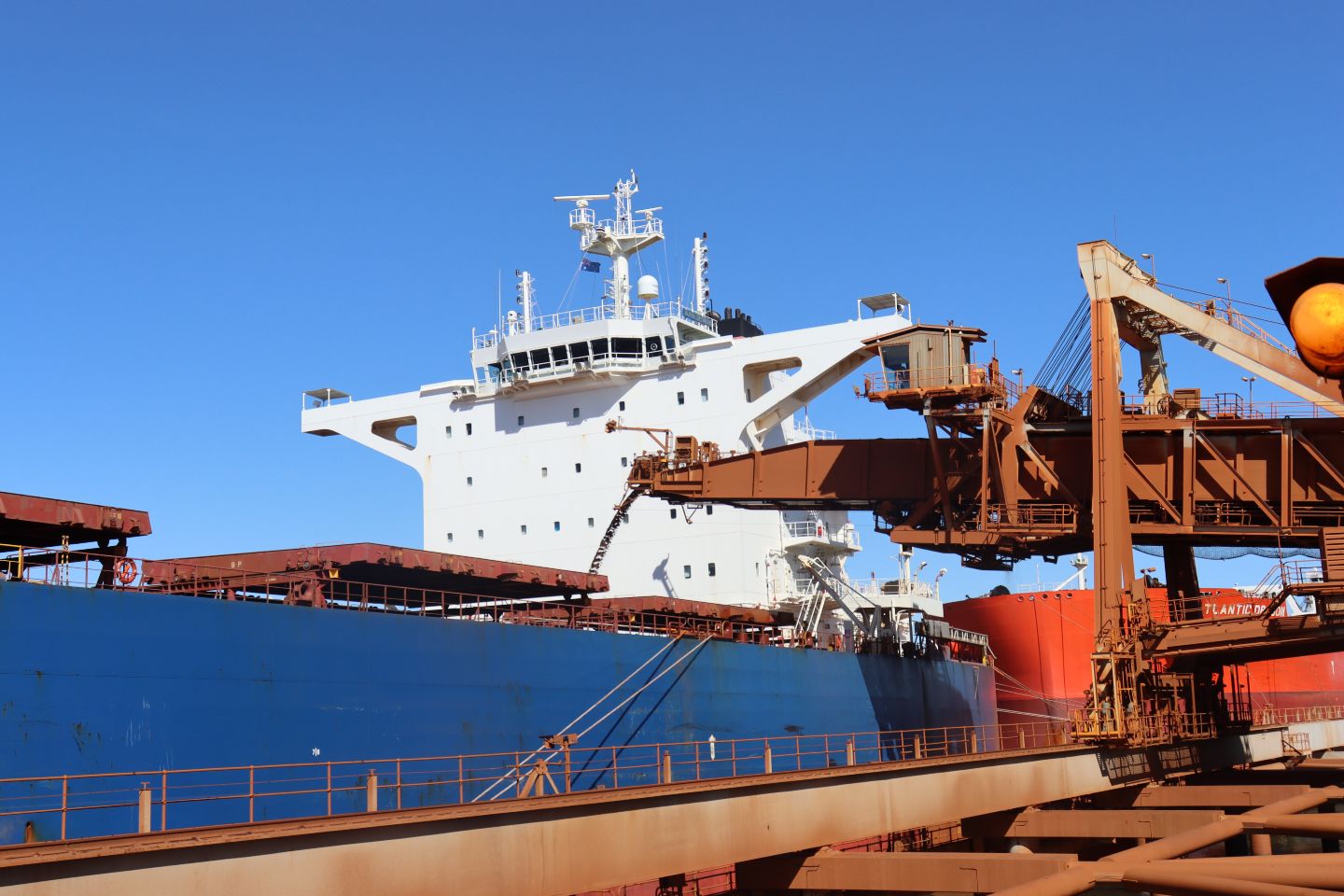
The mining giant has started trialing the new technology on two of its shiploaders, with the intention of fully automating the process across all eight in the fleet in the next year and a half.
The process uses laser 3D scan technology in lieu of a manually controlled system for loading iron ore onto shipping containers.
The loaders at Nelsons Point and Finucane Island fill some 1,500 bulk ore carriers every year, exporting approximately 280 million tonnes of iron ore in 2021.
It is expected automating the process could increase production by more than one million tonnes each year.
Speaking to the development, BHP’s WA iron ore asset president Brandon Craig said the company was looking to stake its place as the best operator in the industry.
“I think it reflects directly where we’re trying to go as a business,” Mr Craig said.
A full roll-out of the technology, which is broadly tipped to save on costs while improving production and safety, is in the works.
“In the next month or two we expect the first shiploader to be fully operational and it’s going to take us another 12 to 18 months to finish the balance of the ship loaders across the business,” Mr Craig explained.
There are approximately 960 BHP workers at the port, though the miner says that automating shiploading would not cut any existing roles at Port Hedland operations.
Rather, 12 new roles have been created based at the company’s remote operations centre in Perth to monitor the technology.
Mr Craig told Business News that these types of projects would be essential for keeping BHP a cost-competitive business should the iron ore price weaken.
He said prices for the commodity were holding firm.
“There’s still an element of stimulus taking place in our major markets which is continuing to hold up and support the iron ore price,” Mr Craig said.
“We expect it to hold at these types of levels for a couple of months more.”
Looking ahead, Mr Craig anticipated a supply surplus which he said could prompt the business to draw a tighter focus on costs.
“I think what’s important is the industry is progressively moving into a structural surplus,” Mr Craig said.
“So we will see over the coming years, towards the back end of the decade, that we will end up in a situation with lower iron ore prices more generally.
“That’s why projects like automation and things that improve our productivity are so essential because we are going to be a business that competes on cost in future.
“It’s really important that our safety and productivity is at the highest possible levels to enable us to do that.”








